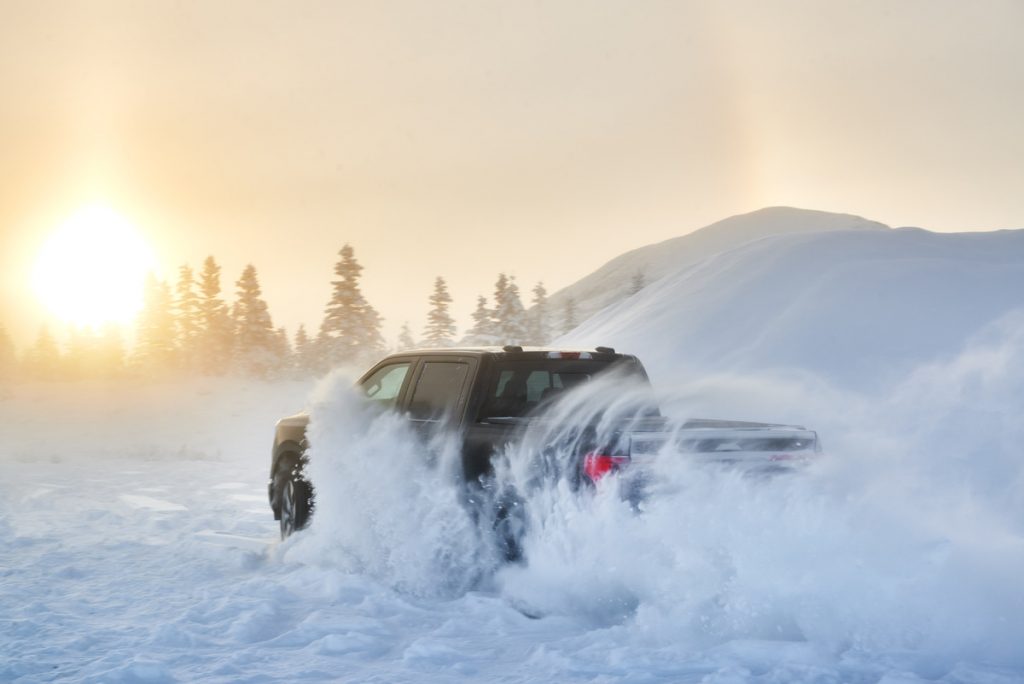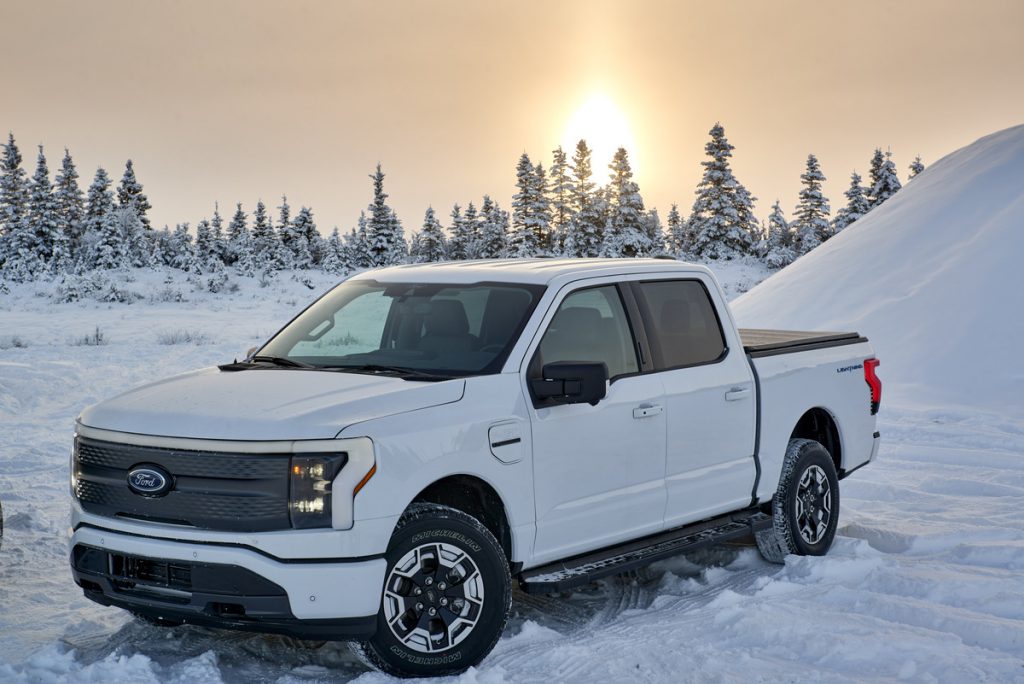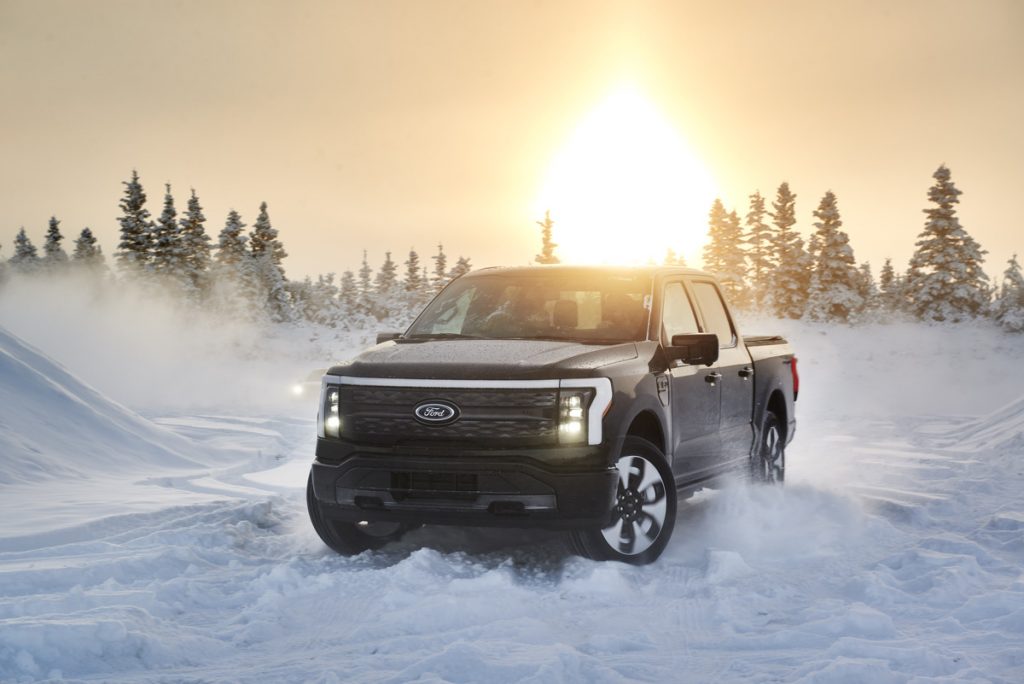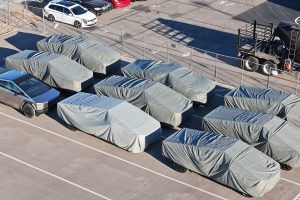Ford is preparing for the first deliveries of its all-electric pickup the F-150 Lightning this Spring. As Ford moves closer to bringing the electric version of its popular pickup series to market, the company has been assessing the vehicle’s performance in some of the most challenging settings, ensuring customers will enjoy the top-notch capabilities the F-series has offered for decades. The F-150 Lightning spent two weeks with Ford engineers in Alaska, providing the vehicle with some of its toughest and trickiest tests to date.
Ford, which saw an over 55 percent increase in electric vehicle sales in February, took its new all-electric pickup to the coldest portions of the frozen Alaskan tundra, assessing the pickup’s performance on low-traction surfaces like snow and ice. The environment also provided another challenge: extremely cold temperatures, which are not always friendly to electric powertrains.



“Alaska provides us the extremely cold temperatures, snow and ice-covered surfaces that we need to push the F-150 Lightning in this type of testing, which is really focused on dialing-in how the truck delivers its power to the ground on slippery surfaces,” Cameron Dillon, an F-150 Lightning powertrain engineer, said. “Customers may not regularly see minus 30-degree mornings like we are seeing here, but they will see winter cold, snow, and icy roads, and they should feel confident their F-150 Lightning is ready for all of it.”

Ford says it performed low-mu testing, an evaluation of an all-electric powertrain and how it adjusts power delivery to the wheels on low-traction surfaces. Snow, ice, and cold temperatures all contribute to the removal of traction from normal driving surfaces like concrete and asphalt. Alaska was an ideal choice, especially as it offered extreme scenarios of what the truck will see on a daily basis.
Ford took six pre-production units of the F-150 Lightning to Alaska for the testing, it said. It also tested the pickup’s performance on a variety of winter weather conditions, including loose and packed snow, half ice-half concrete, and complete ice. The F-150 Lightning’s ability to sense wheel slip and adjust power to the wheels within the blink of an eye helps improve handling. The advantages are just another feature of electric powertrains, Nick Harris, another F-150 Lightning powertrain engineer, said.

“F-150 Lightning in the snow is a very different ballgame compared to gas vehicles. The responses are extremely quick and the dual motors make it as if you have two engines pumping out power in one vehicle. A lot of our work is to coordinate the two motors to work together to best deliver torque to the ground, so that customers who drive in the snow and ice ultimately feel very confident.”
The electric F-150 Lightning has six standard benefits that all can be attributed to the use of an electric powertrain, rather than a gas-powered one:
- Standard dual motors front and rear
- Standard always-on 4×4
- Quick torque delivery
- Standard electronic-locking rear differential
- Selectable drive modes
- Low center of gravity for even more confident handling
Ford also can adjust the calibration to help make quick adjustments to the vehicle, making testing more efficient. While the team spent just two weeks in Alaska’s extreme conditions, Ford says the F-150 Lightning Powertrain team also dedicated numerous testing sessions in Michigan’s Upper Peninsula, Borrego Springs, Johnson Valley, and at Ford’s Michigan Proving Grounds near Romeo.
The F-150 Lightning will begin customer deliveries this Spring. Ford recently split its EV and combustion engine operations into two “divisions.” The electric side is known as Model e, while combustion engine projects will fall under the Ford Blue division.





